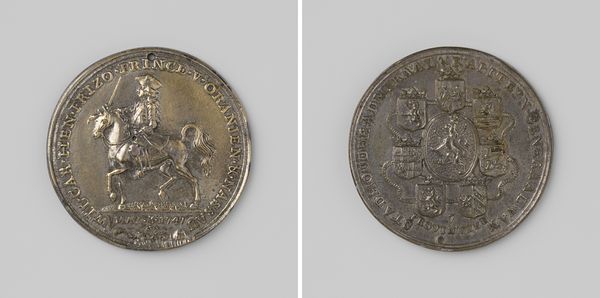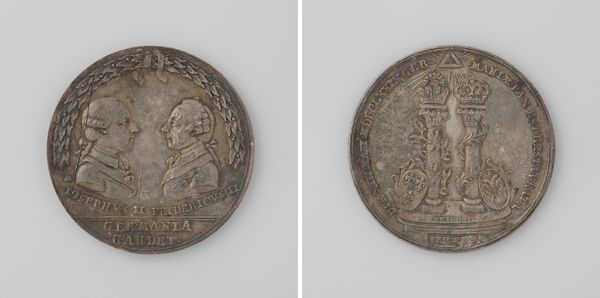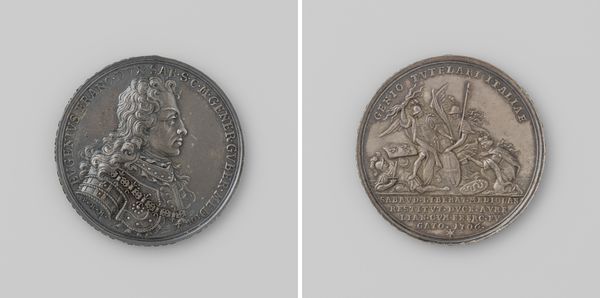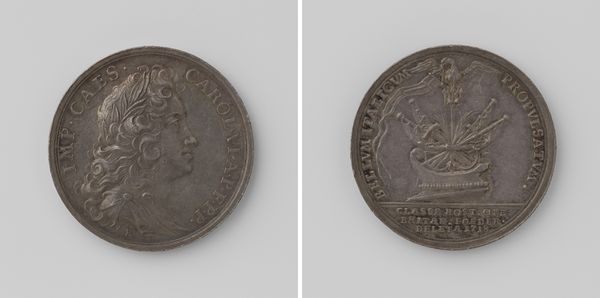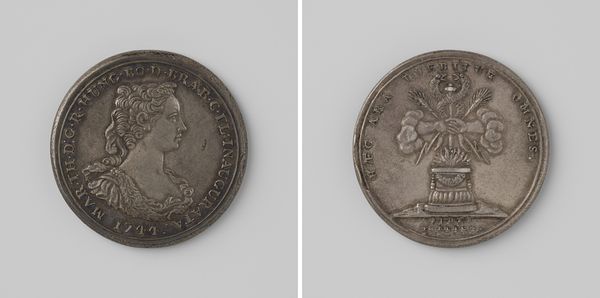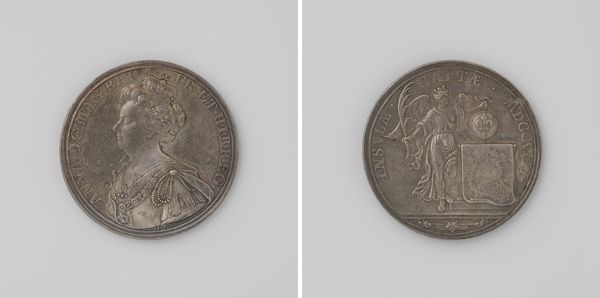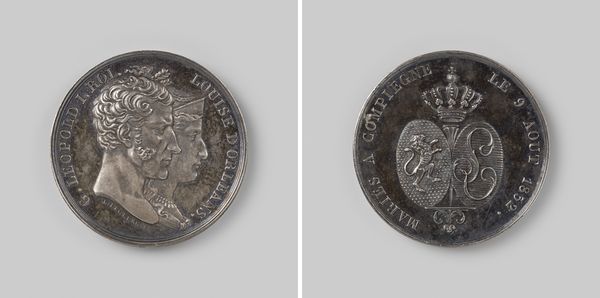
metal, relief, sculpture, engraving
#
portrait
#
baroque
#
metal
#
sculpture
#
relief
#
sculpture
#
history-painting
#
engraving
Dimensions: diameter 8.2 cm, weight 161.56 gr
Copyright: Rijks Museum: Open Domain
Editor: This is a commemorative medal of Albertine Agnes, Princess of Orange-Nassau, made around 1696. The profile portrait on one side is really striking – so severe, yet delicate, almost ethereal. What's the story behind this kind of portraiture? Curator: These medals were more than just portraits; they were deliberate constructions of identity and power. Consider the relief. It elevates her, presenting her likeness not as flesh and blood but as an enduring symbol. Do you notice anything familiar about the facing coat of arms and surrounding heraldry? Editor: I can see two lions, one on each side of the crest. The symbols are probably quite important...but I’m not sure what they signify. Curator: The lions signify courage and nobility, prevalent heraldic symbols of powerful houses. More specifically, in the Dutch Republic, provincial arms are often supported by lions. In this context, however, these regal symbols serve to both commemorate and propagate. Think about what Albertine Agnes represented to the House of Orange-Nassau in that moment. What would the medal’s images attempt to express to people? Editor: So, the imagery reminds everyone of her lineage and power… making a claim for future generations as well. It's a visual link to the past, a carefully constructed statement intended for posterity, not just a pretty picture. Curator: Exactly. Cultural memory made manifest, compressed into symbolic form, ripe for interpretation centuries later, and able to signal lineage at a glance. Editor: I never considered how meticulously these images were curated to shape lasting impressions! Curator: Each emblem, each carefully chosen feature speaks volumes about the subject and the society that created it, reinforcing how images are vital containers and transmitters of our cultural DNA.
Comments
rijksmuseum about 2 years ago
⋮
Most coins have a side with a portrait, usually of a ruler. In addition, portrait medals have also always been made, primarily to honour, commemorate, or glorify an important event or person. They were often intended for a general public. Some were destined to be family heirlooms. In any case, the medallists tried to make the likenesses as realistic as possible. That is why they are considered a separate genre.
Join the conversation
Join millions of artists and users on Artera today and experience the ultimate creative platform.




